California Public Seed Banks Complete Historic Cone Collection Year
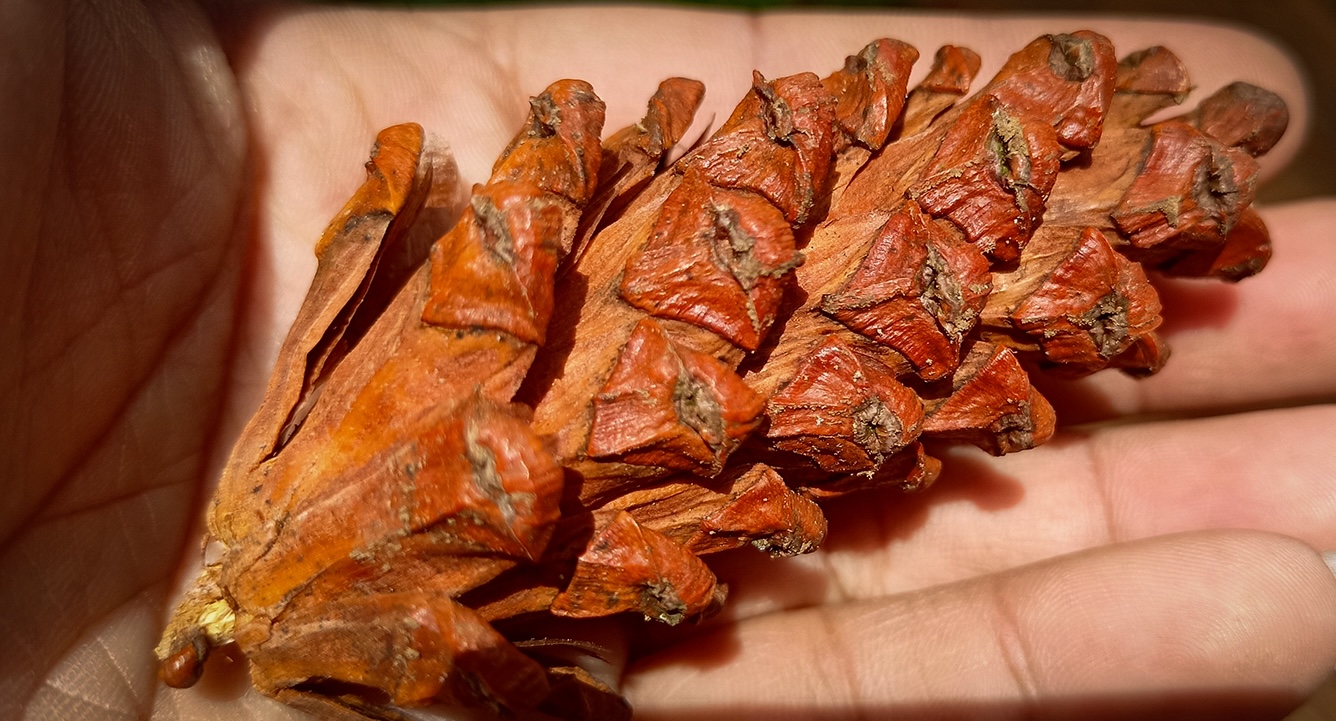
California Public Seed Banks Complete Historic Cone Collection Year
December 5, 2024 – California’s two public seed banks collected a total of 11,330 bushels of conifer seed-bearing cones in 2024. The U.S. Forest Service Placerville Nursery collected 6,700 bushels and CAL FIRE’s L.A. Moran Reforestation Center collected 4,630 bushels. 30% of the bushels collected in 2024 were supported by the California Reforestation Pipeline Partnership which helped increase cone collection in public seed banks in 2024 by 275% from the total collected in 2023. In addition to public seed banks, voluntarily reported private sector seed collection in California totaled 8,670 bushels which brings the statewide total to at least 20,000 bushels which could potentially reforest as much as 681,000 acres.
State Coastal Conservancy Awards Nearly $6 Million For Wildfire Resilience Projects
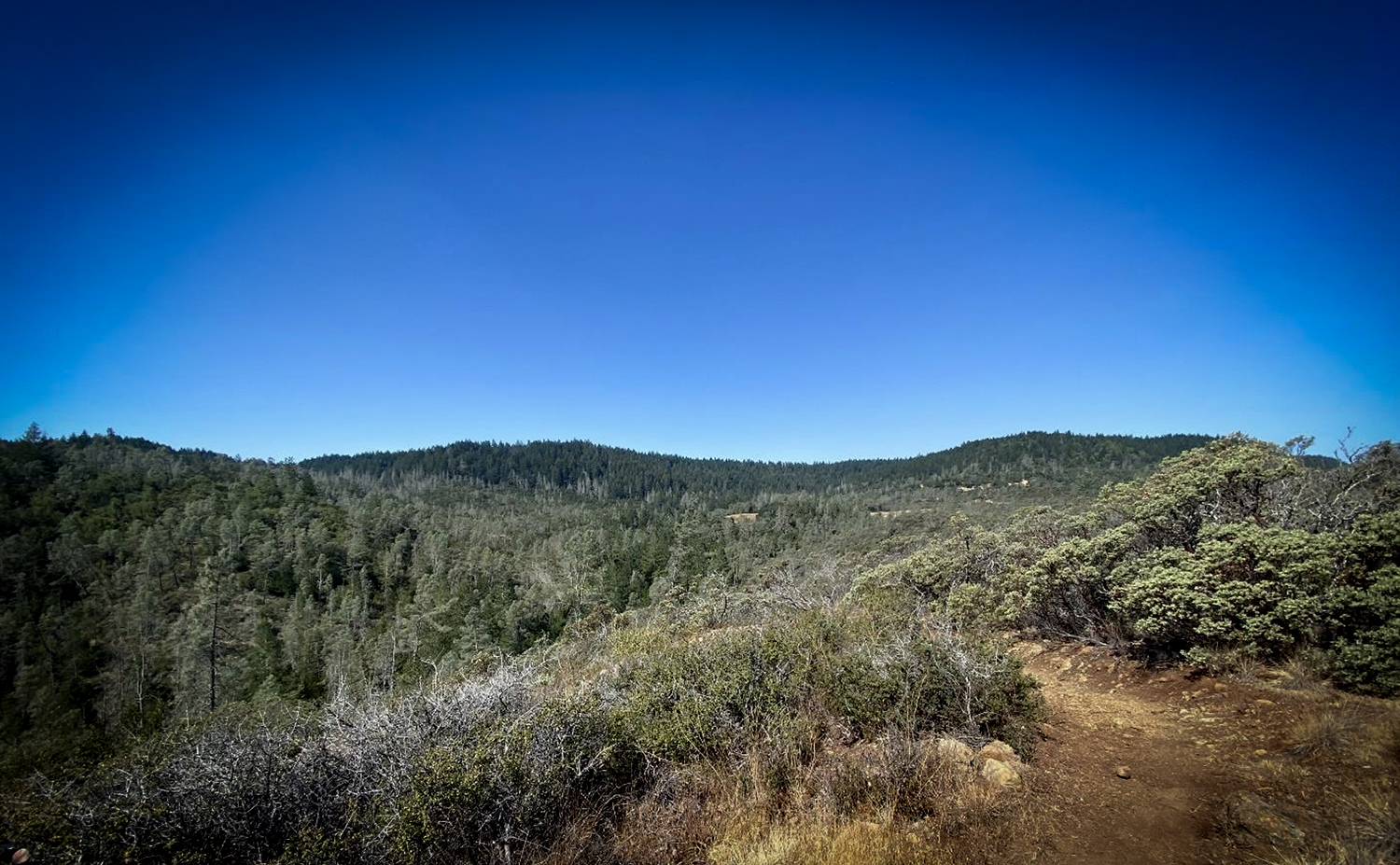
State Coastal Conservancy Awards Nearly $6 Million For Wildfire Resilience Projects
- $250,000 to support Civicorps’ East Bay Wildfire Risk Reduction project for workforce development and vegetation removal in Alameda and Contra Costa Counties.
- $1,542,000 for the San Mateo County Critical Evacuation Corridors Wildfire Resilience Project to remove hazardous vegetation along two critical road evacuation corridors.
- $500,000 to implement the Garland Ranch Wildfire Resilience Project to thin 12 acres of eucalyptus trees and create a 6.2 acre shaded fuel break, maintain previously treated areas, collect data, and conduct community engagement in Monterey County.
- $1,626,000 to the U.S. Forest Service to treat approximately 24 miles of historic fuel breaks by removing vegetation along the Santa Lucia ridge line within the Los Padres National Forest to protect neighboring communities in Monterey County from catastrophic wildfire.
- $947,850 for Santa Barbara’s Wildfire Resilience Project to reduce wildland vegetation fuels acres, restore native species, and conduct community engagement.
- $1,131,700 for the Ascot Hills Resilience Project in Los Angeles to enhance 33 acres of habitat through the removal of invasive plants and planting of native plants to increase wildfire resilience.
RESOURCES
Federal Funds Reduce Wildfire Risk and Support Local Economies
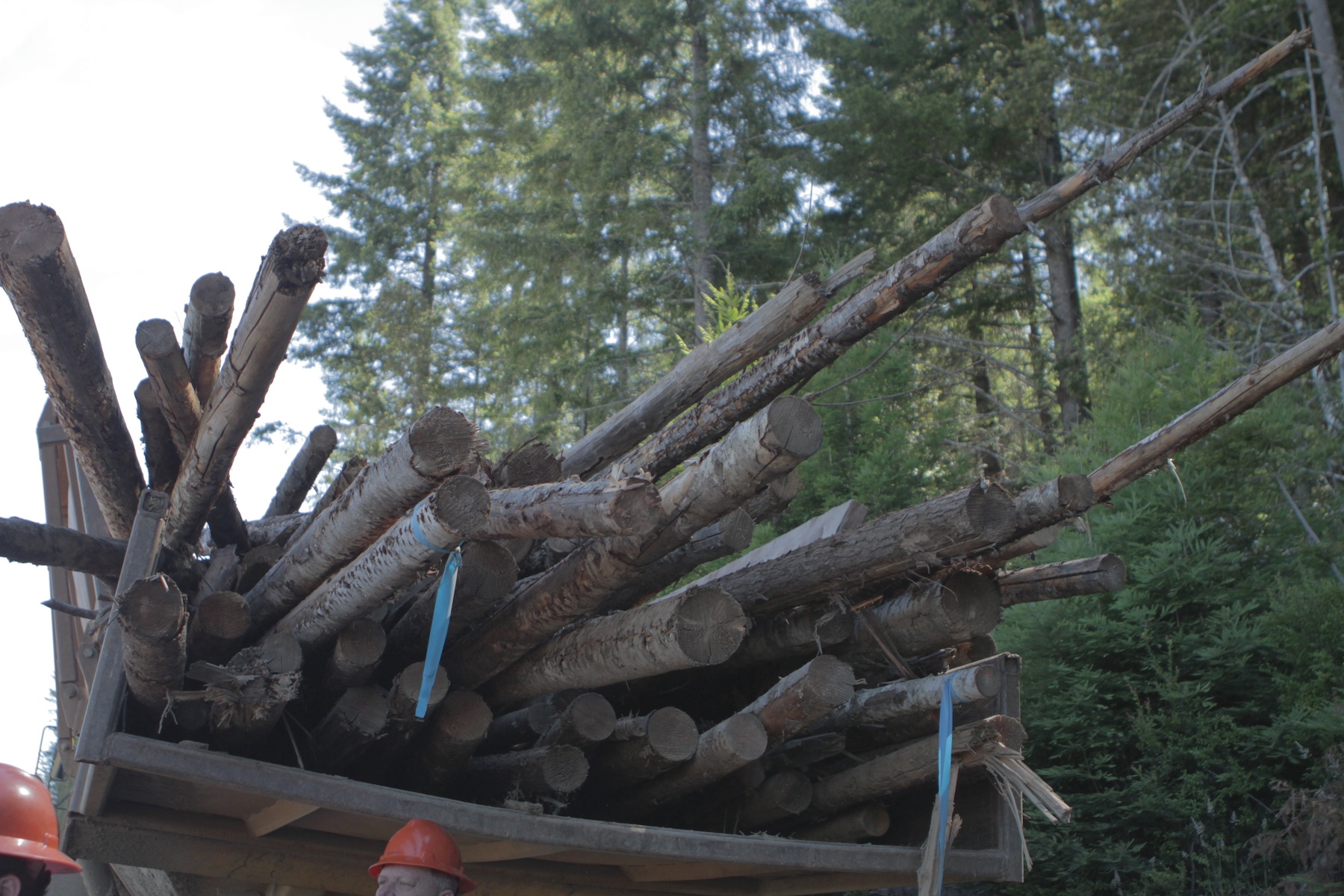
Federal Funds Reduce Wildfire Risk and Support Local Economies
Federal Funds Support Wildfire Impacted Communities:
November 15, 2024 – Governor Newsom announced that five communities hit hardest by the devastating wildfires in 2018 will receive $40.7 million in new federal aid to support community development and help communities reach full economic recovery. This funding will reach communities that are still recovering from the economic and mental health impacts of wildfires and demonstrates the importance of continued support for disaster-impacted communities, even years after initial disaster relief has concluded. The funding comes from the federal 2018 Community Development Block Grant—Disaster Recovery Workforce Development program and will go to communities in the counties of Butte, Lake, Los Angeles, Shasta, and Ventura.
USFS Awards Over $7 Million to Reduce Wildfire Risk and Support Local Economies in California:
November 13, 2024 – The U.S. Forest Service awarded $20 million to transport hazardous fuels from forests to facilities for processing into wood products or energy sources. These awards fund 66 projects in 13 states, including nearly $7.3 million for 12 projects in California. Awarded projects will increase the pace and scale of wildfire resilience treatments and provide economic benefits to local communities and businesses. Projects will support critical wood products industries and underserved communities by providing jobs in rural areas that may be impacted by mill closures.
U.S. Forest Service Completes Record Setting Year for Prescribed Fire
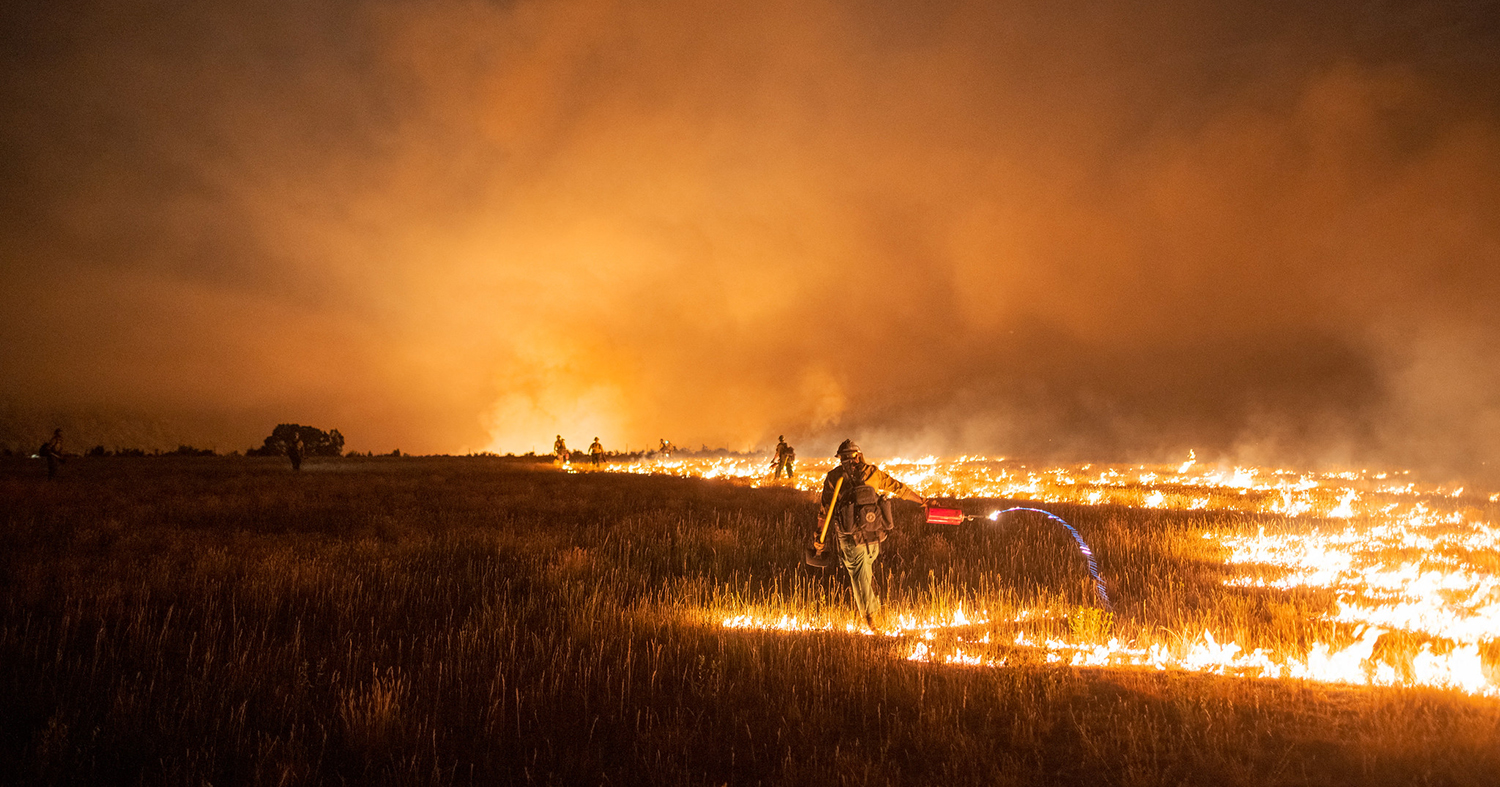
U.S. Forest Service Completes Record Setting Year for Prescribed Fire
November 20, 2024 — The U.S. Forest Service successfully treated over 325,000 acres for forest health on national forests in California during the 2024 fiscal year. This includes over 72,000 acres of prescribed burning alone. The previous U.S. Forest Service record for prescribed fire was set in 2018 when 63,711 acres were treated. This marks significant progress toward the USFS target of deploying 150,000 acres of beneficial fire in California’s Strategic Plan for Expanding the Use of Beneficial Fire.
California Passes Proposition 4 — Providing $1.5 Billion for Wildfire Resilience
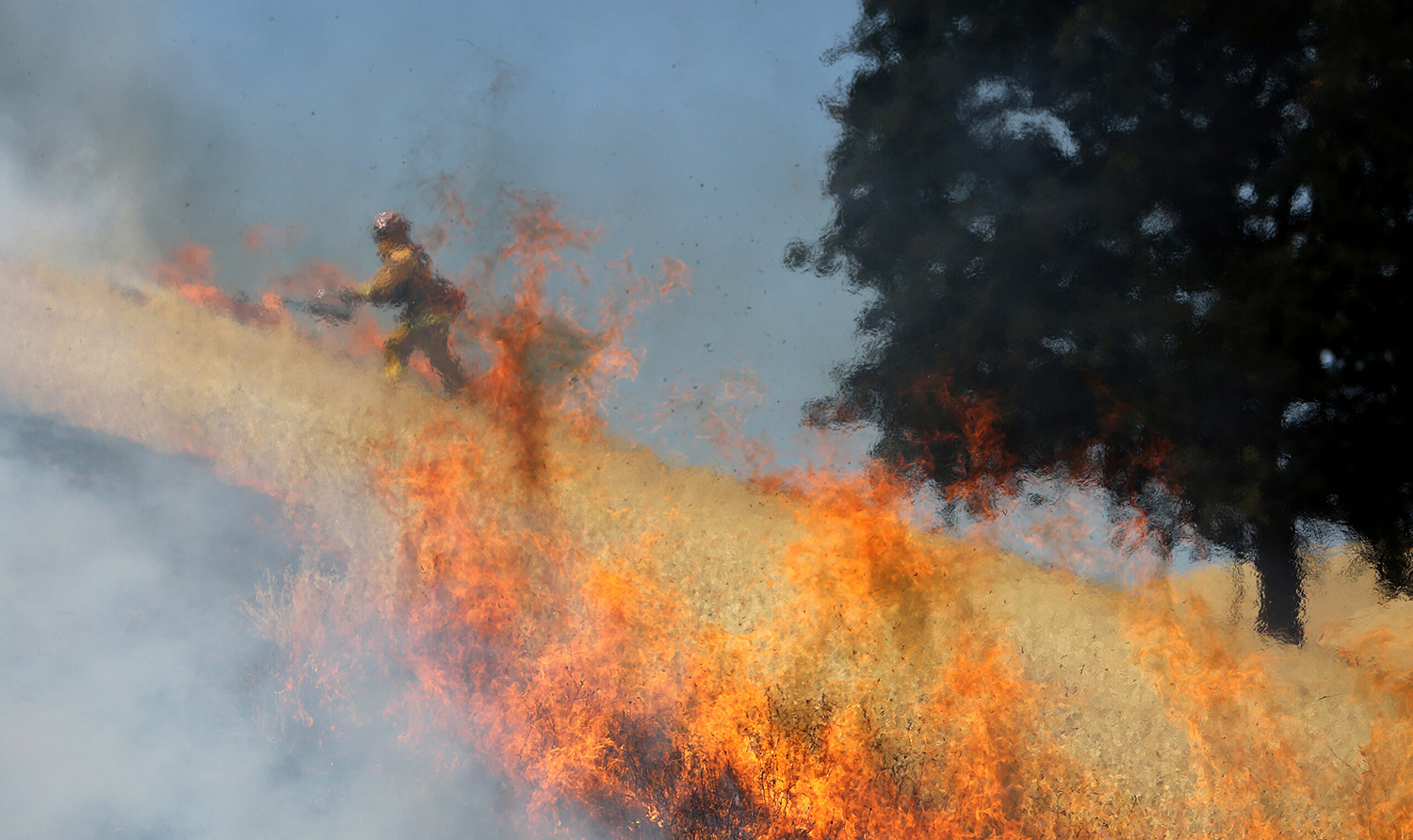
California Passes Proposition 4 — Providing $1.5 Billion for Wildfire Resilience
November 5, 2024 – Californians passed Proposition 4, the first-ever climate bond to go before California voters. The proposition provides $10 billion in bond funds for critical wildfire, flood protection, and other climate resilience projects around the state, including $1.5 billion for wildfire resilience. This funding will enable agencies to improve landscape health and resilience and protect communities from wildfire risks through programs such as the Regional Forest and Fire Capacity Program. The funding also includes $50 million for long-term capital infrastructure projects that utilize wildfire mitigation waste for non-combustible uses.
In addition to funding wildfire resilience, $1.2 billion will be used to protect natural lands and preserve biodiversity, with $870 million directed to the Wildlife Conservation Board to help the state to meet its goal to protect 30% of lands by 2030. The approval of Proposition 4 is a major advancement for California’s efforts to increase the pace and scale of wildfire and landscape resilience treatments, adapt to a changing climate, and reach goals set in the California’s Wildfire and Forest Resilience Action Plan.
CAL FIRE & USFS Investments Confront California’s Wildfire Crisis & Expand Urban Forests
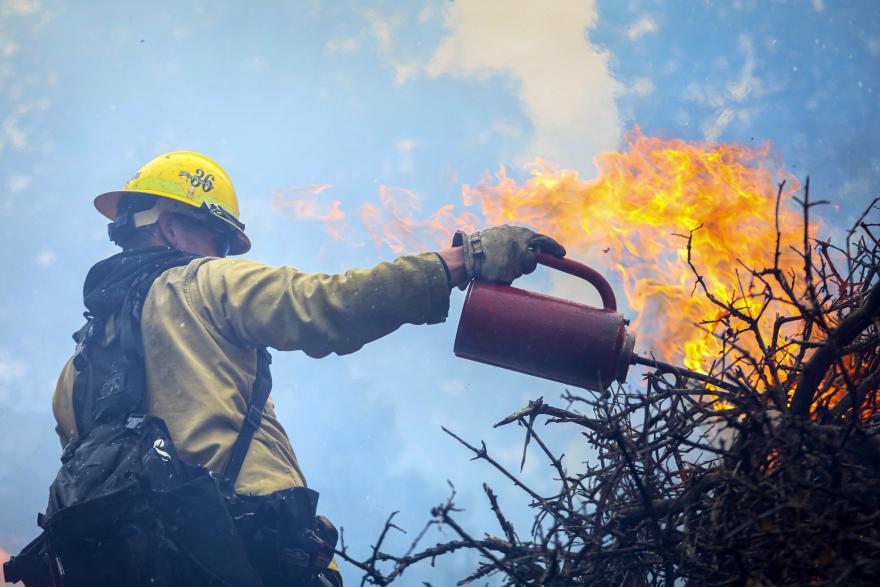
CAL FIRE & USFS Investments Confront California’s Wildfire Crisis & Expand Urban Forests
October 17 – USFS Invests $15 Million to Confront California’s Wildfire Crisis
The U.S. Forest Service (USFS) announced $100 million will be invested in 21 new projects to expand work on the USFS Wildfire Crisis Strategy to reduce the threat of wildfire in high-risk areas across the country. $15 million will fund three projects in California helping further Task Force goals of protecting communities in the Wildland Urban Interface.
- Sequoia National Forest – $5 million to reduce wildfire risk to the Breckenridge and Pine Flat communities through thinning and prescribed fire, with wood byproducts going to a biomass facility or the local sawmill when viable.
- Eldorado National Forest – $5 million for hazardous fuels reduction, strategic fuels breaks, and prescribed fire on the Georgetown Divide. The project will also create strategic fuel breaks near residential and commercial infrastructure in Volcanoville and Georgetown, including a high-powered electric transmission line.
- Tahoe National Forest – $5 million to reduce hazardous fuels, create defensible space around six communities, create safe ingress and egress along 6.3 miles of road, and engage at least seven partner groups, including local tribes.
September 20 – CAL FIRE and USFS Award $31 million to 22 Urban Forestry Projects in California
CAL FIRE and USFS announced nearly $31 million in Urban and Community Forestry grants in California focused on urban forestry topics of management, expansion and improvement, education, workforce development, capacity building, and green schoolyards. The projects are intended to reduce greenhouse gas emissions, improve the functionality of urban forests, arrest the decline of urban forest resources, address climate change resilience, improve the quality of the environment in urban areas, and increase access to environmental career pathways. All funded projects will directly serve priority populations within one or more defined disadvantaged and/or low-income communities in an urban area.
CAL FIRE Forest Health Research Grant Program: Applications are now open for the Forest Health Research Program which is offering $4 million in research funding through its FY 2024-2025 grant solicitation. These grants will support research that directly benefits landowners, resource agencies, fire management organizations, and decision-makers throughout the state.
CAL FIRE Dashboard Shows Effectiveness of Fuels Treatments on Recent Wildfires
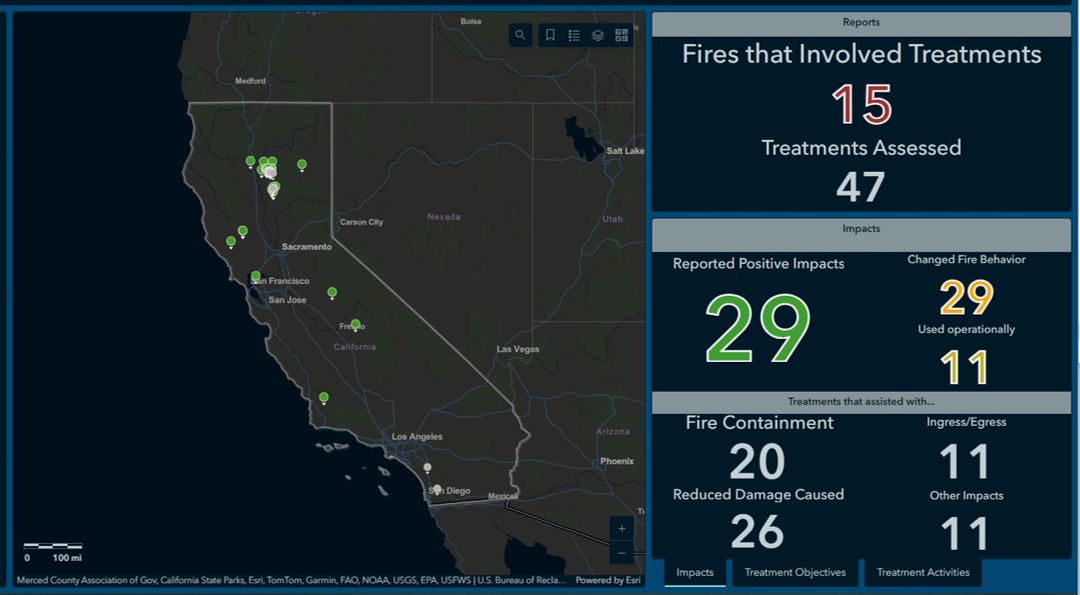
New CAL FIRE Dashboard Shows Effectiveness of Fuels Treatments
On October 10, 2024, CAL FIRE launched its Fuels Treatment Effectiveness Dashboard to show how on-the-ground projects are protecting communities and landscapes when wildfire strikes, a key initiative of the Task Force. The dashboard displays Fuels Treatment Effectiveness Reports which evaluate the impacts vegetation management treatments have on fire behavior and highlight how fuel reduction activities not only assist in suppression efforts but also protect life, property, and the natural resources of California.
Fuels Treatments are areas where fuel reduction activities have been conducted, with the primary objective of reducing fuel loading. Treatments that are considered for evaluation include:
- Treatments that have been completed or have had activities in the last seven years.
- Objectives of:
- Broadcast Burn
- Fuel Reduction
- Fuel Break
- Right of Way Clearance
- California Forest Improvement Program (CFIP) projects with fuel reduction activities (e.g. thinning, pruning, piling).
- Fire plan, Vegetation Management Program (VMP) and California Vegetation Treatment Program (CalVTP) activities completed by CAL FIRE or Contract Counties.
- Wildfire Prevention and Forest health grant-funded projects including work performed by grantees and contractors.
Treatment Effectiveness is the effect a fuel reduction treatment has on fire behavior, ingress or egress, and fire suppression.
Examples of Positive Impact include: assisted with fire containment, ingress/egress, reduced property damage, or changing fire behavior.
Examples of treatments that Changed Fire Behavior include: halted rate of spread, slowed rate of spread, or reduced fire intensity.
Examples of treatments that Contributed to Control of Fire include: used as a primary or secondary containment line, provided ingress/egress for fire suppression personnel.
Emergency Forest Restoration Team Accelerates Caldor Fire Recovery
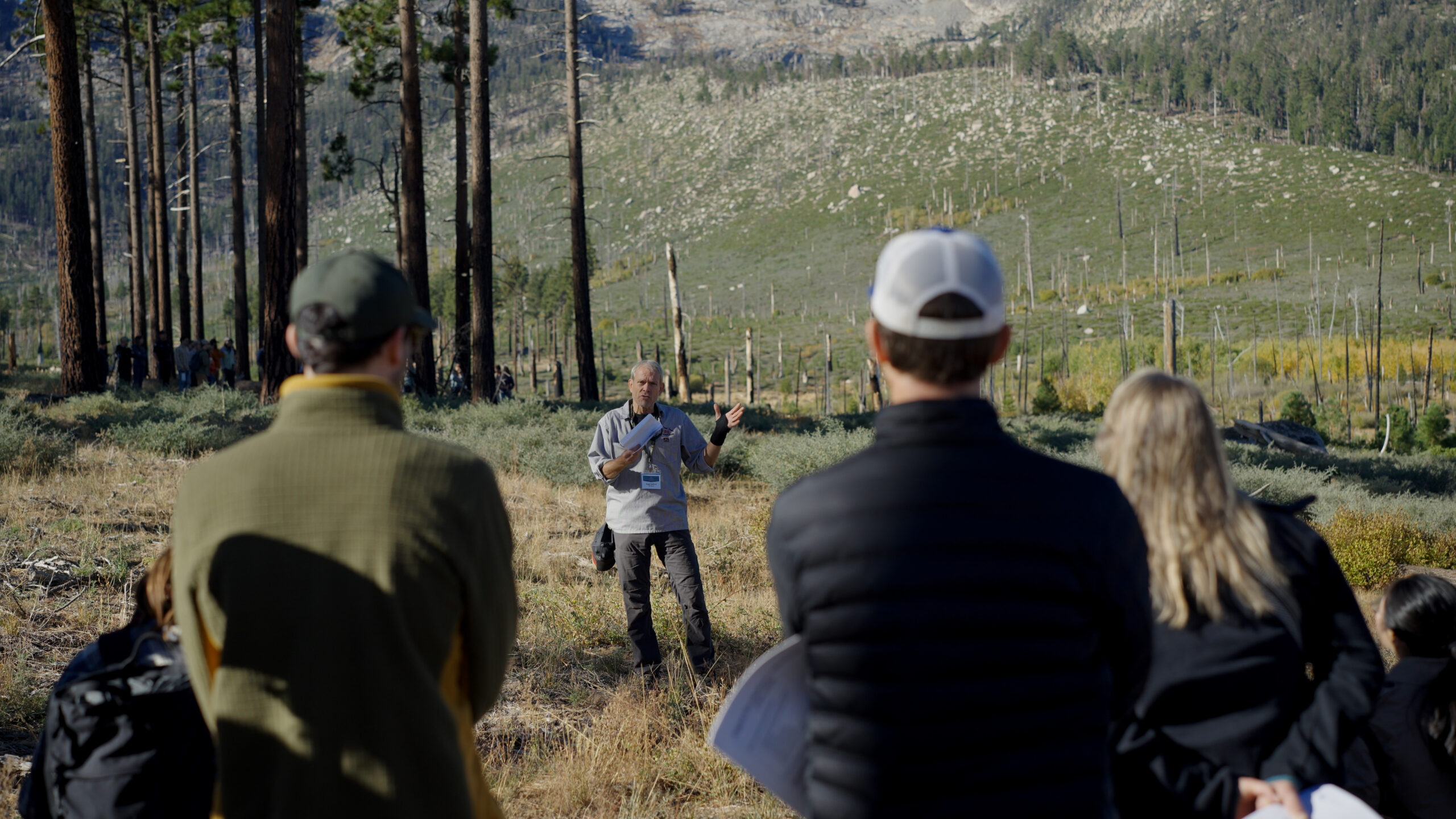
Caldor Fire Recovery Demonstrates Success Using EFRTs
October 17, 2024 – While non-industrial private forests make up roughly a quarter of California’s forested land, they often don’t have any pre-established funding or plans for immediate restoration after a wildfire. To address this critical gap, the Task Force Action Plan (Action Item 1.14) calls for the establishment of Emergency Forest Restoration Teams (EFRTs) to help small private forestland owners recover their lands. In 2021, three pilot EFRTs were developed in response to the Dixie, Tamarack and Caldor fires. By the end of 2023, the three programs had removed dead trees from 2,500 acres and planted new trees on 1,400 acres. On October 11, a field tour showcased how the Caldor EFRT has enabled the area to restore its natural landscapes, open recreational access and recover economically. These pilot EFRTs are proving successful and there are now 15 EFRT programs established across the state.
California Protects 11,000 Acres of the Upper Trinity River Watershed
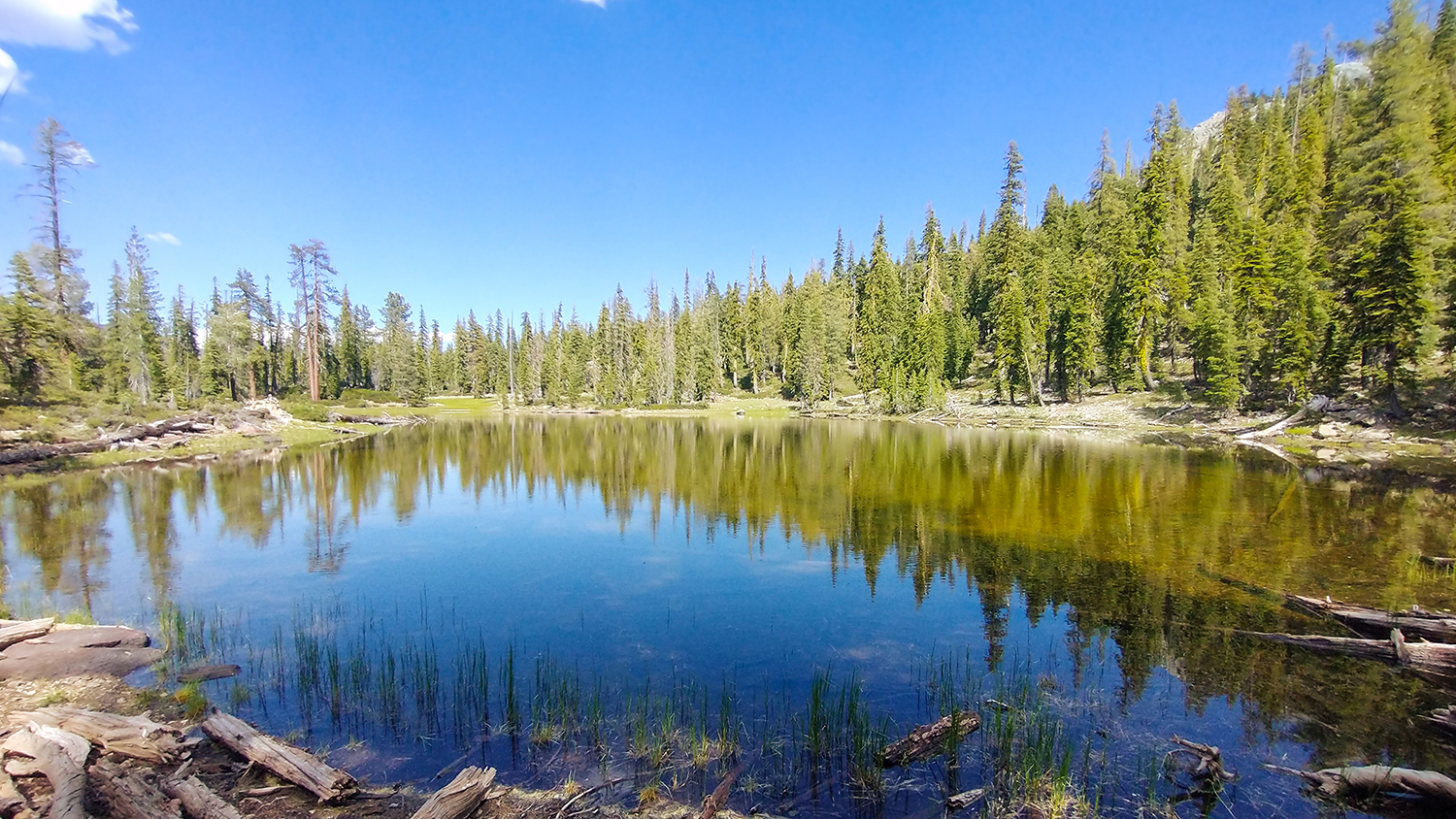
California Protects 11,000 Acres of the Upper Trinity River Watershed
August 5, 2024 – Pacific Forest Trust has purchased 11,000 acres of the Upper Trinity River watershed from a timber company and transferred it to the Watershed Research and Training Center as a conservation easement. This marks a major step in the state’s efforts to safeguard vital water resources, protect biodiversity, and conserve ecologically important landscapes.
The purchase was funded by state and federal agencies, including support from the Wildlife Conservation Board and the Sierra Nevada Conservancy. The easement aligns with Task Force goals by assuring the property will be managed to mitigate extreme wildfire risk. It also demonstrates the critical intersection between efforts to promote wildfire resilience with enhancements of watersheds, wildlife habitats, as well as recreation and economic opportunities.
SNC Awards Cultural Burning Grant to Nevada City Rancheria Nisenan Nonprofit

SNC Awards Cultural Burning Capacity Grant to Nevada City Rancheria Nisenan Nonprofit
August, 2024 – The Sierra Nevada Conservancy (SNC) has awarded $250,000 for the Nevada City Rancheria Nisenan Tribe to reduce hazardous fuels through cultural-burning practices and demonstration of traditional ecological knowledge forest management practices on highly visible lands in the wildland urban interface of Nevada City, CA. The funding will support partnership development, training, planning, permitting, and implementation of a cultural burn, along with replanting culturally and ecologically important plants in the restored landscape.
